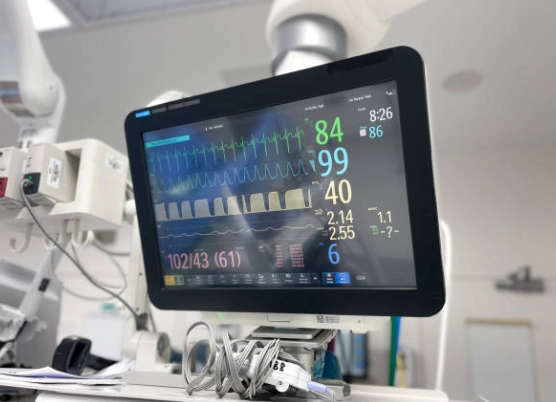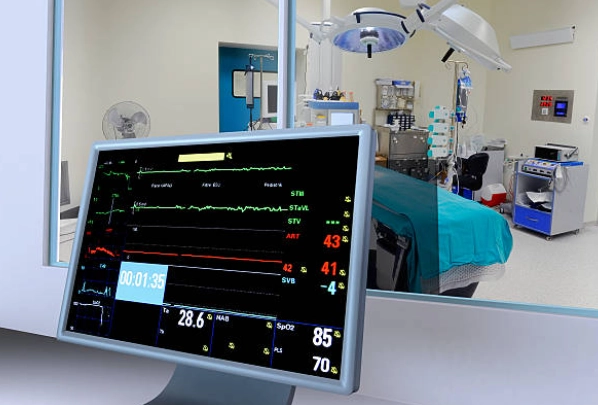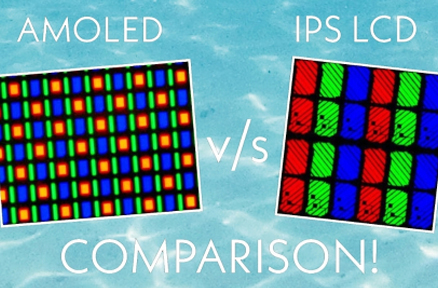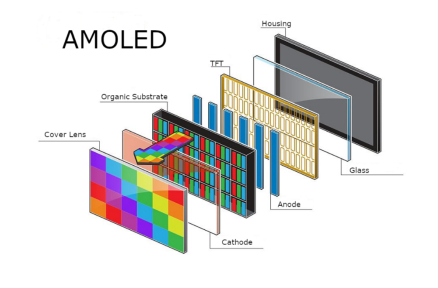Medical-Grade Monitors: What to Expect
So, what is a medical-grade monitor? In short, it’s a computer screen constructed and certified IEC 60601 and therefore safe for patient and medical device use. They are specifically designed to withstand the high standards of healthcare environments. Unlike consumer-grade monitors, they’re made to provide consistent performance in critical moments, so healthcare professionals can count on precise visual information to diagnose, plan treatment, and monitor patients.

Most of the medical-grade monitors also feature capabilities for the special conditions of hospitals and similar healthcare facilities. They could be high-brightness displays, anti-glare treatments, sealed designs that are easy to disinfect, legacy connectivity features, and strict adherence to regulatory standards.
Different Types of Medical-Grade Monitors

Diagnostic Imaging Medical-Grade Monitors
Used by the radiology department and similar specialties. High resolution and precise color reproduction are essential for these medical-grade monitors as they’re used for hard-to-detect conditions like breast cancer. These displays often support DICOM calibration and can show tens of thousands of gray shades to ensure diagnostic accuracy. They must also be built metal-free to be used safely near MRI machines.
Surgical Medical-Grade Monitors
Found in operating theaters and similar rooms. Images must be clear and highly detailed, as many operations are too small to see with the naked eye (example: colonoscopies). Additionally, those same images must also be visible despite the glare and reflections from bright surgical lighting.
Patient Medical-Grade Monitoring Displays
Used to display a patient’s vital signs, like body temperature and pulse. They must be clear and easily readable, as providers and other medical personnel use the data to evaluate patients and update their electronic healthcare records properly. These monitors require real-time accuracy and high reliability.
Clinical Review Medical-Grade Monitors
Located wherever patient readouts and images are displayed continuously and in real-time. Such data must be clear and easy to read. These monitors are very common in cardiology, pathology, and – of course – radiology.
Workstation on Wheels (WoW) Medical-Grade Monitor
WoWs and computer carts allow providers, nurses, and other healthcare personnel to travel from patient to patient and provide point-of-care service. Besides displaying clear and readable images, medical-grade monitors on WoWs should be rugged enough to handle the constant jostling and bumping from so much traveling.
Battery-Powered Medical Display
These medical-grade monitors are powered by rechargeable batteries. Mounted on a WoW, they are both a display and a power source for thin client PCs and accessories. The batteries are hot-swappable, allowing users to exchange spent ones for new batteries without shutting the entire thing down. This makes them ideal for 24/7 usage.
Benefits of Medical-Grade Monitors
Ensure Patient Safety
Medical-grade monitors are certified not to harm patients or disrupt nearby medical devices. This is crucial in settings where sensitive equipment such as pacemakers or MRI machines operate.
High Image Quality
The color accuracy, luminance, brightness, and calibration of healthcare displays are tuned to provide the high-resolution and quality images providers need. For example, some monitors can display up to 65,536 shades of gray for specific exams needed by radiologists.
Regulatory Compliance
Medical monitors should meet the Digital Imaging and Communications (DICOM) standard (ISO 12052). This means they’re certified to display images consistently regardless of the computer used or the monitor’s graphic card.
Durability and Reliability
Medical facilities like hospitals are open 24/7. Computer monitors must function reliably under such conditions, which is something consumer-grade monitors are not built to do.
Hygiene Concern
Hospital staff spend excessive time and effort to keep their facilities germ-free. IP65-rated medical-grade computer monitors are sealed to protect the delicate interior from harsh cleaning materials.
Selecting the Right Medical-Grade Monitor

How will the medical-grade monitor be used?
Will the monitor be used to review images to aid in patient diagnosis? Or pull up EMR records or the patient’s vitals in real time? Remember, each department uses its medical displays differently. Even issues like screen glare may need to be considered (as in the case of surgical monitors).
What is your budget?
Medical-grade monitors are more costly than off-the-shelf brands. That price tag can rise if they have even more requirements, like displays used in MRI labs. On the other hand, they have a better ROI as they’re built to last longer than consumer models.
Can it work with outdated medical equipment and devices?
Many hospitals and other medical facilities run legacy devices: older hardware and software that are no longer supported by their original vendor but still vital to their customers’ operations. Your medical-grade monitors should have legacy ports to connect with them.
What is the vendor’s support?
Resellers give you a greater selection of models, while original equipment manufacturers offer only their products. On the other hand, you’ll find OEMs far more open to negotiating prices, customizing features, and providing support since they have complete control over such factors.
Meeting Your Medical-Grade Monitor Needs with Kadi Display
Kadi Display brings over two decades of expertise in delivering customized display solutions tailored for specialized industries including healthcare. We found a large number of customers need not only a TFT-LCD but also a complete display solution integrating touch, PCBA and housing; which aligns well with hospitals seeking integrated solutions for point-of-care terminals or mobile carts.
Kadi Display’s factory spans over 5,000 square meters with in-house production capabilities including LCM/TP/BONDING processes. We use Shenzhen’s unique supply chain advantages to provide customers with a fast set of display solutions. Our offerings include IPS TFT LCDs known for wide viewing angles up to 178 degrees—ideal for clinical environments where multiple users view screens simultaneously—and high-brightness panels exceeding 1000cd/m² for surgical rooms.
With extensive customization options—from interface types like LVDS/MIPI/HDMI/Type-C/VGA/USB-A—to optical bonding techniques that enhance durability against moisture ingress or cleaning agents—Kadi Display ensures your investment meets both functional requirements & hygiene standards.
FAQ on Medical-Grade Monitors
What makes a monitor “medical-grade”?
A monitor is considered “medical-grade” when it complies with standards such as IEC 60601 certification ensuring safety around patients/equipment while offering DICOM compliance for consistent image rendering.
Why not use consumer displays instead?
Consumer displays lack necessary certifications & durability required in clinical settings—they aren’t designed for constant operation or exposure to disinfection chemicals.
Do all departments need specialized types?
Yes—each department uses its medical displays differently. Radiology needs grayscale depth; surgery requires anti-glare; mobile carts demand rugged/battery-powered solutions.
Are there long-term benefits?
Absolutely—they have a better ROI as they’re built to last longer than consumer models, reducing downtime & replacement costs over time.
Does Kadi Display offer support post-purchase?
Yes—our team provides technical consultation & custom development services including signal adapter boards & structural components tailored per project needs.
Latest Blog & News
- OLED – Organic Light Emitting Diode
- Passive Matrix vs Active Matrix - A Beginner's Guide
- Which Display for Raspberry Pi Interface Optimizes Touch Control: DSI MIPI or HDMI?
- Power of Industrial TFT LCD Touch Screen: Revolutionizing Interactivity
- What’s the Difference Between Anti-Reflection and Anti-Glare?









